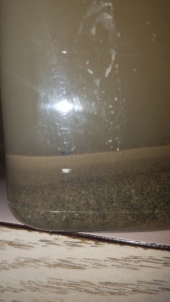As you mentioned, I believe one of the things that Lawton does is that he doesn't just plant 100% fruit trees in the beginning. If I remember correctly, he has something like 90% fast growing nitrogen fixers at the start. As he is rehabbing the land, he expects a higher rate of tree loss when starting out, and it isn't a complete wash to have to chop and drop a nitrogen fixer. As time progresses, between natural losses and selective chop and drop, the biodiversity of the trees changes from 90% pioneer nitrogen fixers and 10% fruit trees to 10% nitrogen fixers and 90% fruit trees, nut trees, and natives. The improvement to the soil creates conditions so there is a lower casualty rate to the fruit trees and they grow quicker and stronger.
Another thing to note is he isn't growing from seed at day one. I'm pretty certain all of his trees are started in a greenhouse a few years ahead of time, so it is more like a 13 year old food forest. Having irrigation set up in advance so the trees are never thirsty probably helps towards consistent fast growth. He also has many years of experience, and isn't just picking random fruit trees that he likes, or that he 'thinks' will grow well for him. I am fairly certain he is very deliberate with his choices to stack the deck in his favor to get the outcome he wants. This is one thing I notice a lot with gardeners around here. Many of them are from the north and want to grow exactly what they did in the past. The climate here is different and you can't expect everything to acclimate. Even simple microclimate changes can cause big wins or losses.
It's probably much easier to succeed with trees that are very well known to work, and then slowly change out a few trees at a time to things you would like to have or experiment with, than it is to start out with a bunch of experiments at day one and expecting a high rate of success. It can be hard to tell what went right or wrong when there are lots of experiments and not enough control specimens. Lawton is a wizard in his climate and extremely knowledgeable of other climates. I think for anyone to get to his ten year food forest in 15 years time would be doing exceptionally well!
Since you aren't too terribly far along yet, it might be worthwhile to look in to some native nitrogen fixing pioneer tree species. I remembered something about alder being used, and came across this article:
Red Alder Has Nitrogen-Fixing Superpowers
Since you already have some trees started, it would take some time for pioneer species like the red alder to create any significant shade on your existing trees. By the time they get that far, they could easily be chopped back to improve the soil. Until that time, they can create a tiny bit of shade and habitat both above and below ground. Since they will be culled anyway, you could probably just plug them in between the existing tree spacing without any worry of crowding. As a native plant, it should be easy to source and only cost a little bit of time. It might be something worth investigating. Good luck!













 1
1






















 1
1























 1
1




 2
2










 1
1






 2
2










 2
2









